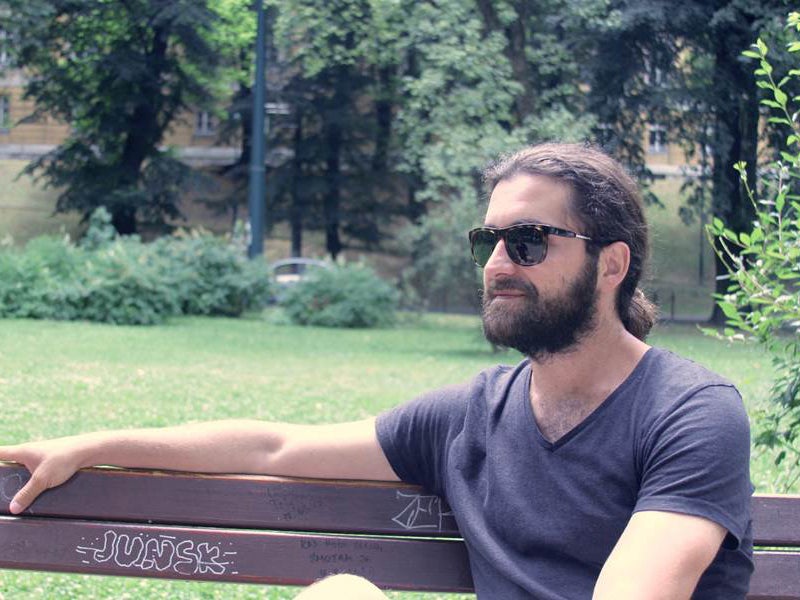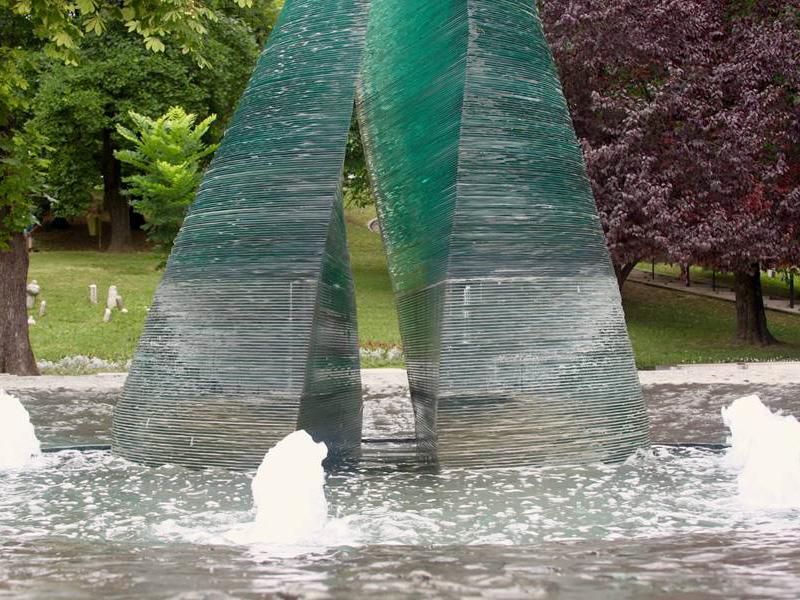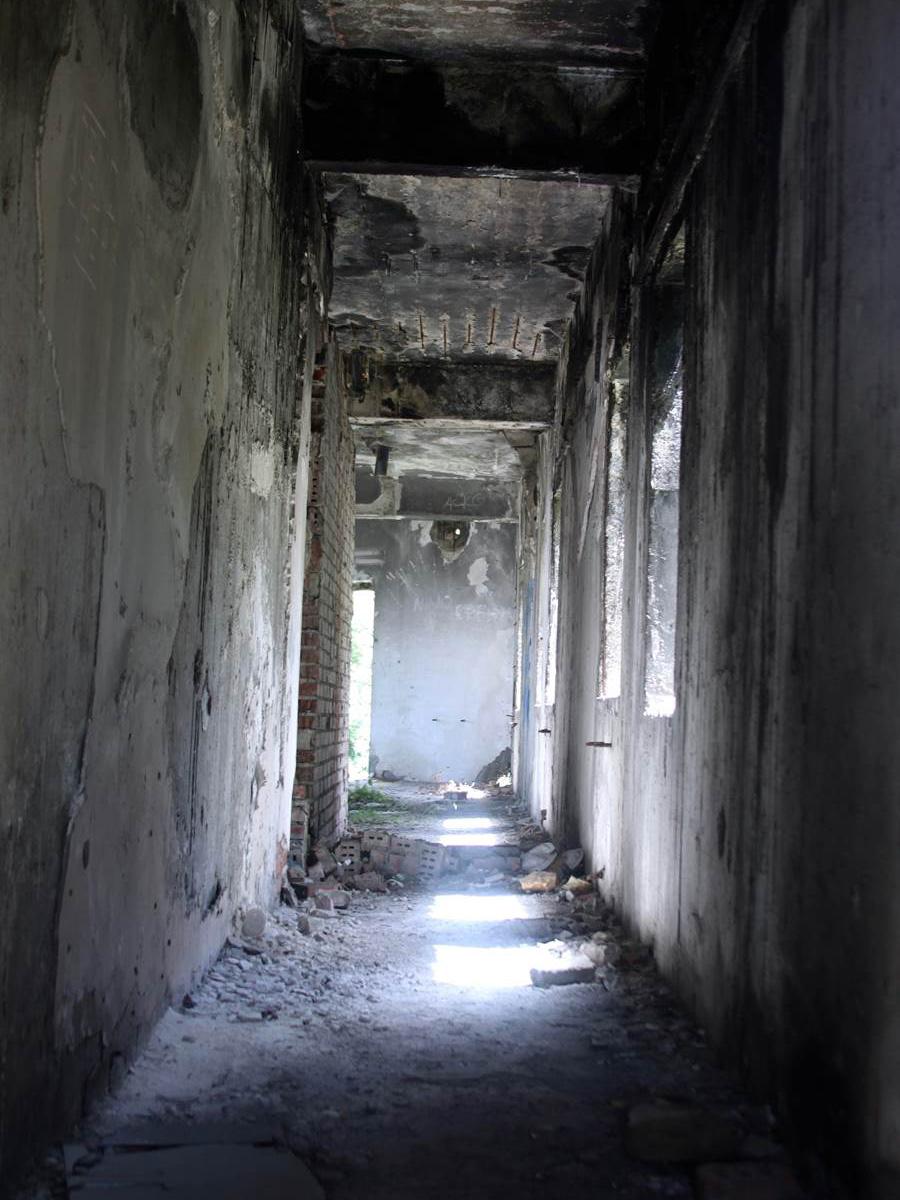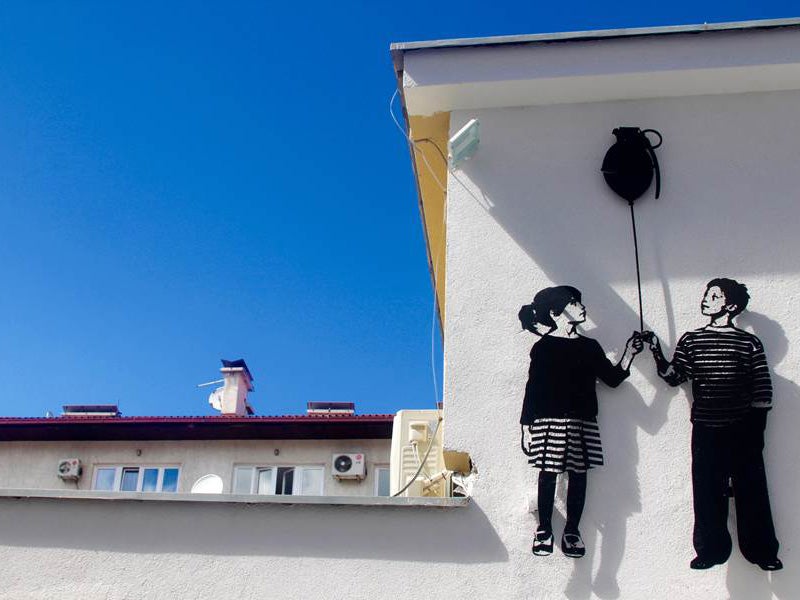Sarajevo: a cosmopolitan capital in an ethnically cleansed state
Max Clements reflects on the capital of Bosnia and Herzegovina, 25 years on from the longest siege in modern history – and one of the bloodiest

The Bosnian Serb army camped on the hills surrounding the city may be long gone, but Sarajevo’s multi-ethnic way of life remains besieged. During the Dayton Peace Conference in 1995, US peace negotiator Richard Holbrooke, while poring over a virtual map of Bosnia, looked up and quipped, “There’s nothing but mountains here”.
“That’s Bosnia,” replied Slobodan Milošević and Momir Bulatović, the presidents of Serbia and Montenegro, both of whom were complicit in the grievous collapse of Yugoslavia.
This obscure anecdote stuck in my mind while travelling through the country. Spectacular mountains dominate the terrain between Mostar and Sarajevo, part of the Dinaric Alps mountain range, which spans from Italy down through the Balkans, ending in Albania.

Places of worship serve as poignant reminders of Bosnia’s ethno-religious mix. The rural skyline is pricked by the minarets, Byzantine domes, and the spires of Catholic churches, a permanent testimony to the mixed communities which largely vanished after the war.
The road to Sarajevo meanders around the infinite hills, guided by the turquoise Neretva River, which glints in the waning afternoon sun. We arrived in Sarajevo around midnight in the westernmost part of the city. The sprawling metropolis of Novi Grad, or the New Town, is the industrial heart of Sarajevo. The 1970s concrete tower blocks and high-rise buildings are an immediate reminder of Bosnia’s communist past. The industrious hinterland and commercial centre soon give way to the iconic old town with its terracotta rooftops which mounted the hills overlooking the city. When daylight comes the scars of the past are revealed. Despite the city’s rejuvenation and extensive rebuilding over the past two decades, bullet holes are still visible in the apartment blocks, shops and walls along the infamous sniper alley, a street which civilians living in the besieged city crossed at their peril under Serbian sniper fire. Such images came both to define this conflict and shame the international community for its inaction.

Bosnia and Herzegovina is a microcosm of the former Yugoslavia; this is because it contains a sizeable Serbian and Croatian population alongside its Bosniak, or Muslim, majority. As rampant nationalism stoked ethnic war, it was the multi-ethnic Bosnia and Herzegovina which paid the greatest price for the fall of Yugoslavia.
“I didn’t expect war to come to our lives. I was eating pizza with my friends from university when the first shell fell in the old area of Sarajevo,” says Armina Pijalović – Arna for short – over a baklava in her apartment not far from the city centre. “We knew that war was happening around us, we thought that negotiations would succeed to keep peace here,” adds the 49-year-old who currently works as a guide for Sarajevo Funky Tours.
The city had the most to lose from an ethnic war, arguably the most of any city in the former Yugoslavia. To many of its residents, this was abundantly clear in 1992 as a nationalist fervour had engulfed the Balkans once again. The 1990 elections, the first multi-party general elections held in Bosnia since the advent of communism and the death of Josip Broz Tito, split the country along ethnic lines. This was even the case in Sarajevo which, in 1991, had a relatively mixed population: 50 per cent Bosniak Muslim, 25 per cent Serb, 6 per cent Croat, and 13 per cent self-declared “Yugoslav”.
On 5 April 1992 around 50,000 to 100,000 Sarajevans of all ethnic groups took to the streets in what was a desperate cry for peace as war enveloped Bosnia, in defiance of nationalism and separatism. “We called a peaceful demonstration, our enemies did not see it that way”, says Arna, who took part, outside the Bosnian Parliament building, back in her student days. Bosnian Serb sniper fire from the Holiday Inn overlooking the parliament square dispersed the protesters, killing six people.
A suffocating siege of the city was ignited: almost four years of death and unadulterated daily misery. Another 4,000 civilians would die during the siege. The Holiday Inn, used as the Bosnian Serb headquarters of Radovan Karadzic before the war, has now been rebranded, the Hotel Holiday. It stands as a bizarre bright yellow obelisk, a pariah hanging over Bosnian parliament.

Sarajevo resembles an organic memorial; a living and breathing tribute to the victims of the siege. Children play in a park on Tito Street just yards away from a fountain built in the memory of children killed by artillery fire in that very park 20 years earlier. The market square, where residents come to buy and sell fruit, vegetables bread and meat, is overlooked by a giant red glass wall with the names of the 68 people killed in the market bombing of 1994, which shocked the world into action. The streets of Sarajevo are covered with concrete scars caused by the impact of mortar shells, which are now filled with red resin. These “Sarajevo roses” mark fatal mortar explosions. I was surprised by the willingness of Sarjevans to talk to us about the traumas of war.
“My childhood was really difficult,” says Ado Hasanovic. “I didn’t know what was normal life, that you sleep in a normal bed, that you have water and that you could brush your teeth, go to work and eat normal meals.” The 31-year-old, a filmmaker originally from Srebrenica, says he was aged six when the Serbs arrived on 9 May 1992.
“They came to my village and they caught 74 people and they killed them. My father stayed in Srebrenica until 1995. He survived the death march because he did no go to the UN Dutch camp because he did not believe [they would help], like the other 12,000 to 15,000 people who travelled over the mountains. Only 6,000 of the people survived.” The fall of Srebrenica, a supposed UN safe haven, to the Bosnian Serb army remains the biggest instance of genocide in Europe since the Second World War.

In Sarajevo the legacy of centuries of population-mixing meant that intermarriage is common. “My mum is Orthodox [Serb] but my father is a Muslim” says Sandra Ahmedovic. The 26-year-old works at War Childhood Museum in the city. “They [the Bosnian Serbs] were shooting at us and shooting at her, it was hard for her to understand that.” Throughout the course of the 20th century, war has come and gone from Sarajevo but the city’s identity has never changed. Time and time again Sarajevo has stood as a symbol of hope against xenophobia and racial and religious persecution.
In 1941, amid fierce ethnic conflict that would repeat itself 50 years later, the Resolution of the Sarajevo Muslims, condemned the persecution of the Serbs by the Nazi backed Ustaše in Croatia and called for the protection of all Bosnians, regardless of their ethnic identity. This spirit of magnanimity was at work in the April 1992 protests; 25 years on it is once again appreciable despite the lingering trauma of war.
“All people who declare themselves Serbs or Croats, and Bosniaks, they are all Bosnians. All citizens in Bosnia and Herzegovina are Bosnians… ‘What is your religion?’ It doesn’t matter, you should be proud we have a history here, this is Bosnia and Herzegovina”, says Ado. The spirit of Sarajevo, encapsulated in the words of Arna, Ado and Sandra, suggests that a multi-ethnic Bosnia, where faith, ancient genealogy and political rhetoric are all marginal, could have been possible.

But Bosnia’s demography has been artificially redrawn creating contiguous areas of virtual ethnic homogeneity. This is the product of a war in which ethnic cleansing was a strategic military objective. Vast swathes of Bosnia and Herzegovina are now distinctively, Muslim, Serb or Croat, undermining the concept of a Bosnian national identity. Republika Srpska, one of the two constitutional entities within Bosnia and Herzegovina, magnetised the Serb diaspora after the war. More than half a million of the ethnic Serbs who lived in the Federation of Bosnia and Herzegovina and in Croatia, many of whom were war refugees, settled in the new state. The world often forgets that the Croatian government forcibly expelled up to 200,000 Serbs who had attempted to form a Serb state within Croatia, the self-styled Republic of Serbian Krajina. A journey into East Sarajevo, into the Republika Sprska entity, gives a sense of the segregative effect of the recent conflict.
Signs are in Cyrillic, Serbian flags fly on poles and buildings; it is as though Serbia proper begins in eastern Sarajevo. On the eve of the war there were around 92,000 Serbs in the central parts of the city. According to the 2013 census, fewer than a combined 10,500 remain in the municipalities of Centar, Novi Grad, Novo Sarajevo and Stari Grad. The new city of East Sarajevo, in Republika Sprska, is home to almost 60,000 Serbs; the combined population of Bosniaks, Croats and other ethnicities is less than 4,000. “It was difficult for the Serbs who stayed in Sarajevo to be trusted by Bosnian Muslims because in the mountains [around Sarajevo] there were Serbs killing everybody: Serb, Croat, Muslim,” says Ado.
Milorad Dodic, the current president of Republika Sprska, openly favours the secession of Republika Sprska from Bosnia and Herzegovina and has pushed for a referendum on the issue. The secession of the Bosnian Serb entity would violate the terms of the Dayton Agreement, which established the political constitution of Bosnia and Herzegovina. The case for secession has been strengthened after Kosovo’s declaration of independence from Serbia in 2008 because of the large Albanian majority there. If Republika Sprska was to secede from Bosnia, and either declare independence or look for Serbia to absorb it, it would pose a substantial threat to peace in the region while creating diplomatic headache for the international community.
Many observers, in Bosnia and the international community, forcefully argue that the Bosnian Serb entity was the product of genocide; this was undeniably the case in Srebrenica. What is clear, however, is that independence and international recognition of that independence for Republika Sprska or even its annexation by Serbia, would constitute a tacit acceptance of a state founded upon ethnic cleansing. But in a region where the population maps have been decisively redrawn in the past 20 years to create artificial ethnic homogeneity, critics of Bosnian Serb independence could well be fighting a losing battle.

A visit to Sarajevo, a vibrant, liberal, secular and relatively cosmopolitan city, will inevitably fail to reflect the attitudes and the realities of the country at large. The very character and composition of the city is unique. In rural Bosnia, the persecution of Muslims and the flagrant disregard of Christian Europe towards their plight, and the influx of crusading Mujahedeen fighters 20 years ago sowed the seeds of radical Islamism.
According to Der Spiegel more than 300 Bosnians, predominantly from small rural villages, have gone to fight for Islamic State in Iraq and Syria, one of the largest numbers of jihadist fighters from Europe relative to population. Unemployment in Bosnia currently at 25.6 per cent, youth unemployment is a staggering 67.6 per cent, the worst in the world according to data published by the World Bank. Perhaps the greatest issue facing Bosnia, certainly in Sarajevo, is retaining its educated young people, who are seeking greater employment opportunities abroad. These economic and social problems, which all ethnic leaders all agree on, are the new and most pressing issues facing Bosnia and Herzegovina’s political leadership.

Before my companion and I leave Sarajevo, Arna takes us to the top of her apartment building in the centre of the city. Her panoramic view of the city is blocked by a new apartment block, she says, built in the decade after the war. Arna adds it used to be possible to see the Catholic Cathedral, the Orthodox Cathedral, and the central Ferhadija Mosque all from the roof of her building. Sarajevo is where East meets West; where Ottoman and Austro-Hungarian pasts collide; it’s even been called the Jerusalem of Europe.
It seems that violence and siege are the price of earning such a comparison. In the former Yugoslavia, religion is predominantly used as a marker of ethnicity, but religious differences do not account for what happened here. For Serbs and Croats, religion has been a historically integral part of their national identity. Croatia’s national identity was shaped by its Austro-Hungarian, essentially European, outlook of which Catholicism was a big part. Serbia’s Orthodox Christianity defined its people against their Ottoman occupiers, which it freed itself from in the early 19th century. Bosniaks are the same southern Slavs who converted to Islam during Ottoman rule in Bosnia.
While we cannot neglect these vital components of historical national identity, these three constituent ethnicities of Bosnia have shared the same homeland. They are all Bosnians. It is this Bosnian national sentiment, regardless of ethnic national identity or religious faith, which is being cultivated in Sarajevo today. And it must continue to be to build peace and a better future for Bosnia. But in an ethnically cleansed state, where ethnic homogeneity has been artificially imposed by war in most of the country, Sarajevo is once again surrounded; the odds stacked against it.
Join our commenting forum
Join thought-provoking conversations, follow other Independent readers and see their replies
Comments